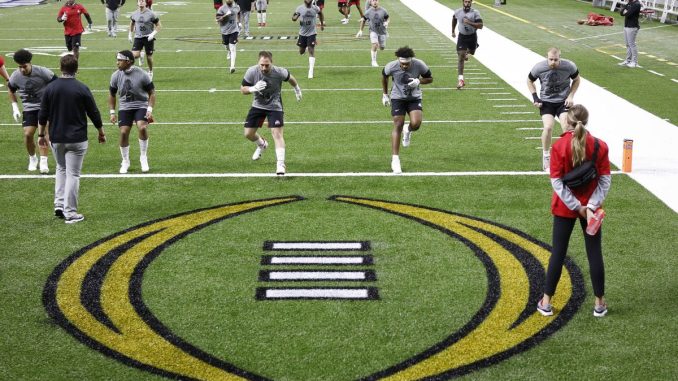
With the extended CFP starting next season, opportunity knocks.
On February 20, a crucial vote will be held to
the terms of the new College Football Playoff structure.
The terms of the selection procedure have not yet been settled, despite the increase from four to twelve teams already been decided. The CFP board of management will determine the number of conference champions who receive automatic bids in light of the PAC 12 conference’s demise.
They will vote on a proposal for a “5+7 model” in six days.
Accordingly, regardless of their conference membership, the top seven teams would advance to the playoffs, followed by the top five conference winners. Originally intended to be a 6+6 format, the objective is to increase the at-large possibilities given that only two teams (Oregon State and Washington State) are left in the previous PAC 12.
For Oregon State and Washington State, this is a lifeline since their only chance is to be one of the other seven. Given that Notre Dame is an independent football team, the same is true for them.
In the event that the 5+7 plan is approved, the Miami Hurricanes would also profit. The Hurricanes might theoretically slip in if they have a solid season but finish just outside of the conference, even though winning the ACC would be the safest path to selection.
In 247Sports’ “way too early Top 25,” which was released earlier this week, Miami was ranked number twelve. After bringing in a second straight top ten recruiting class and adding transfer quarterback Cam Ward, the Canes should see significant improvement.
However, if I may adopt a more pessimistic stance, there’s a possibility that a 5+7 will be most advantageous to the SEC and Big 10. Nowadays, these mega conferences are seen as a “power two” and may come to an end.
However, if I may adopt a more pessimistic stance, there’s a possibility that a 5+7 will be most advantageous to the SEC and Big 10. These super conferences are currently seen as a “power two” and have a good chance of controlling all seven bids once conference champions are chosen.
It’s not hard to see a situation in which Big 10 or SEC teams receive five or more of the remaining seven berths.
Six of the teams ranked between 5 and 12 in the final CFP rankings from the previous year are now in the Big 10 or SEC under the new alignment. The only team not in the top twelve was Florida State, which was placed fifth; the other teams were Georgia, Ohio State, Oregon (now in the Big 10), Missouri, Penn State, Ole Miss, and Oklahoma (now in the SEC).

Leave a Reply